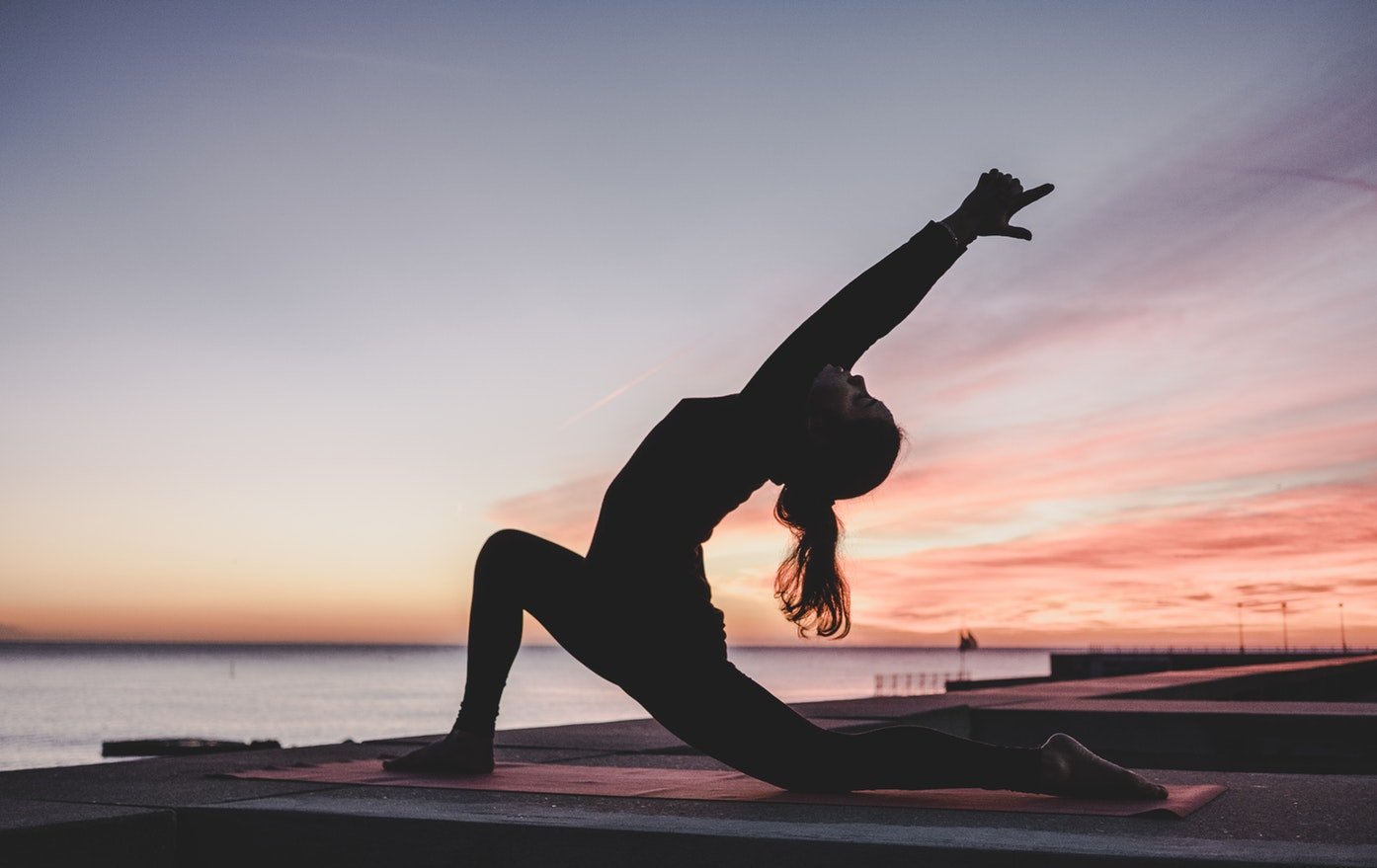Yoga is one of the most popular forms of exercise across the country and while many have heard of it, some may not know how to start yoga. Learning more about the benefits that yoga can offer you may be all the push you need to seek out a yoga class and get started. Yoga is a great exercise for many problems and there is increasing evidence that yoga can be a helpful form of treatment for those in recovery from alcohol or drug addiction.
According to the National Institutes on Drug Abuse, there were over 70,000 drug overdose deaths in the United States in 2017. With tens of thousands of deaths each year and millions more struggling with substance abuse problems, there is an obvious need for increased treatment availability in the country, and globally. While there are many drug and alcohol treatment facilities that can help, there are also many supplemental treatment options that can be used in collaboration with these facilities to promote long-term sobriety, such as yoga.
Yoga And Addiction
In recent years, yoga has been looked at as a way to help with those facing addiction and substance abuse. Using exercises like yoga along with the more conventional forms of treatment like behavioral therapy will help patients deal with anxiety and depressive issues related to sobriety and can help prevent relapses.
There is evidence that mind-body exercises, like yoga, can prove to not only help increase abstinence rates in illicit drug users but also help reduce withdrawal symptoms and ease anxiety symptoms that are commonly associated with alcohol and illicit drug addictions. Furthermore, physical exercise also showed improvement for depressive symptoms in illicit drug abusers specifically.
Neurotransmitters
Drug and alcohol addiction are serious problems that can lead to major changes in brain functioning and can impact neurotransmitters in the brain. With that said, there is evidence that yoga can help to improve communication in the brain and even increase certain neurotransmitters such as serotonin, GABA, and dopamine — two chemicals that are natural anti-depressants. It has also been shown to increase melatonin and improve sleep quality and sleep regulation.
Increasing GABA in the body is important for dealing with some of the common symptoms associated with sobriety. For example, GABA plays an important role in the body’s response to stress, fear, depression, and anxiety. Lower-than-average levels of GABA in the brain have been associated with a number of problems including schizophrenia, depression, anxiety, PTSD, and more. All of these issues can be exacerbated for those going through recovery.
Benefits of Yoga
There are a number of benefits associated with doing yoga according to the National Institutes of Health. While it can be an effective way to help you maintain sobriety, along with the other aspects of recovery, there are many other positive health effects that come from performing yoga. Yoga, and similar exercises, can help to promote both physical and mental health.
Physical Health
One of the most studied and clear benefits from yoga is the way that it can alleviate and help with pain. For example, lower-back pain, neck pain, headaches, and arthritis can all experience positive impacts from participating in yoga exercises. Along with this, yoga will help with balance performance and can lead to gradual and moderate reductions in weight.
Yoga is also associated with improvements in a number of other areas in the body. For example, yoga can help to improve a person’s cardiovascular health. According to the American Heart Association, practicing yoga can help to lower blood pressure, increase lung capacity, improve respiratory function and heart rate, improve circulation, and boost muscle tone.
Mental Health
There is a long list of research that has looked into the effects of how yoga affects certain aspects of mental health. There is evidence that yoga can be helpful for helping alleviate anxiety, deal with various life situations, and reduce stress. In fact, a 2018 review of eight separate studies found that yoga may have short-term benefits for reducing the intensity of anxiety. Similarly, yoga may be helpful in reducing symptoms associated with depression.
Along with physical and mental health, participating in yoga exercises can help promote healthy living habits as well. For example, a 2018 survey of young adults found that those who practiced yoga regularly were more likely to have better eating and physical activity habits. They also said that they thought yoga supported healthier habits through motivation and greater mindfulness. Similarly, yoga has shown to be helpful for sleep in several studies.
There is still more research to be done on the effectiveness of yoga and how mindfulness-based practices can help to improve physical and mental health. However, there is already clear evidence that yoga provides a number of benefits. While practicing yoga may not be as quick or as easy as taking medication, with effort and time, it can help provide a number of positive health effects and can work to relieve some pain and stress that you may be feeling.
How To Begin Your Practice
While most know what yoga is, have probably seen it being practiced, and may even be interested in starting, many don’t know where to begin. Starting something new can be a strange and even difficult process. With that said, if yoga is something that you are interested in starting, it should be pursued. It provides a long list of mental and physical health benefits and can be helpful in promoting long-term sobriety for those who have dealt with a substance use disorder in the past.
If you are looking to begin practicing yoga, you have a number of different ways that you can start. The easiest way to get going is to look to family or friends who already practice it. If you have someone close to you that practices yoga, just simply asking if you can join them is a great way to get started, it also will help them hold you accountable for staying consistent.
If you don’t have someone to go with, or would rather go alone, you can look for places that offer classes such as a local gym, a health center, or a yoga studio close by. If you have never done this sort of thing ever, it is best to go to a beginner class. Find an instructor that you enjoy working with and does not make you feel uncomfortable.
What To Expect
Before you walk in the door of the yoga studio, you may want to know a bit about what exactly you are getting into. Generally, yoga classes last somewhere between 45 and 90 minutes, and nearly all styles of yoga consist of three main components: breathing, poses, and meditation.
Focusing on your breathing is an important part of the exercise and is a big part in helping to reduce the stresses that you may be feeling. Yoga poses, or postures, are a series of movements that work to promote strength, flexibility, and balance. Yoga classes will generally end with a short period of meditation that works to help ease and calm the mind.
Common Types of Yoga
There are so many different types of styles of yoga and it can be a bit overwhelming. However, taking it slow and learning about a few that interest you can help narrow down your choices. It may take a few classes to find the specific style of yoga that is best for you. Some of the more common types of yoga that are practiced around the country include:
Bikram Yoga — Bikram yoga, or hot yoga, is a style of the exercise in which you do a series of 26 different poses in a heated room. The goal of the exercise is to warm and stretch the muscles, ligaments, and tendons and to purify the body through sweating.
Hatha Yoga — Hatha is one of the most widespread forms of yoga and often includes both breathing and performing positions and postures to help promote relaxation and reduce stress.
Ashtanga Yoga — If you’re looking for a more demanding workout, Ashtanga yoga may be for you. During these types of yoga sessions, an instructor will move you quickly from one posture to another.
History Of Yoga
In recent years, yoga has become more and more popular in the United States. Nowadays, about 16 million Americans practice yoga each year. Yoga entrepreneurs have come in to open up their own studios, brand their own styles, create franchises, and invent logos, all in all, the yoga industry in the United States has become a lucrative endeavor.
But, how did this all start? Where does yoga come from and how did it become so mainstream in the United States?
Yoga is not a particular denomination or religion. Rather, it is an old practice that is meant to help harmonize your mind and body. Yoga can be used as a tool to help one transform their thought processes and help promote mental and physical health.
Overall, the origins of yoga as still a matter of debate and there is some disagreement. There is not much consensus on the chronology of the yoga, but there is agreement that it originally developed in ancient Indiana. Some estimates say that yoga began as early as 1700 BC. Despite how long ago people were practicing, the activity did not make its way to the western world until the 19th century.
The first teacher to actively promote and advocate the aspects of yoga to a western audience was Swami Vivekananda, touring Europe and the United States in the late 1800s. With these seeds planted, the practice of yoga has metamorphosized and bloomed into what it is today, a mainstream and popular form of exercise that millions of Americans practice.
Other Forms of Exercise
While yoga is a common form of exercise and activity for those in recovery, it is not the only option and not the only type of exercise that can provide benefits. There have been many studies that have looked into the effectiveness of exercise when it comes to helping someone overcome their addiction and stay sober long term.
For example, studies have shown that regular swimming may be effective in reducing voluntary morphine consumption. Moreover, a small study that examined 38 participants found that physical exercise can provide some support for drug treatment.
Again, though, when it comes to exercise and addiction treatment, it is best to use physical activity in collaboration with other forms of treatment to help promote effective long-term sobriety. Treatment methods such as medication-assisted treatment and behavioral therapy can all be effective in reducing the risk of relapse.
There are many other styles of exercise that you can choose to help improve your situation and promote your sobriety. Aerobic activities specifically are known to help with issues related to cardiovascular health and promote improved physical health. Some types of aerobic activities that can work to improve your mental and physical health processes include gardening, walking, hiking, jogging, water-based exercises, soccer, tennis, and more.
However, you choose to get your heart rate up and stay physically active, be sure to stay consistent.
Next Steps
Yoga is an activity that has been around for centuries, however, it did not become popular in the United States until recently. Nowadays, yoga is hard to avoid. Whether it is your local gym or health center, chances are they offer a yoga class. The popularity of the exercise isn’t a bad thing though. Yoga provides a number of benefits that can help to improve a person’s physical and mental health. It can be especially helpful for those in recovery.
If you or loved one is in recovery, yoga can be a great activity to help promote sobriety long-term. It can be used to help reduce stress and depressive symptoms that can be associated with recovery. Many may not know exactly how to start yoga while in recovery, but just getting out there and finding a class is essentially all it takes to get going. If you are looking to begin your recovery process, Landmark Recovery has rehab centers in Indiana that can help. We offer patients a personalized treatment plan. If you are interested in learning more, please visit our website and reach out to our admissions team today.

Choose Recovery Over Addiction
We're here 24/7 to help you get the care you need to live life on your terms, without drugs or alcohol. Talk to our recovery specialists today and learn about our integrated treatment programs.




